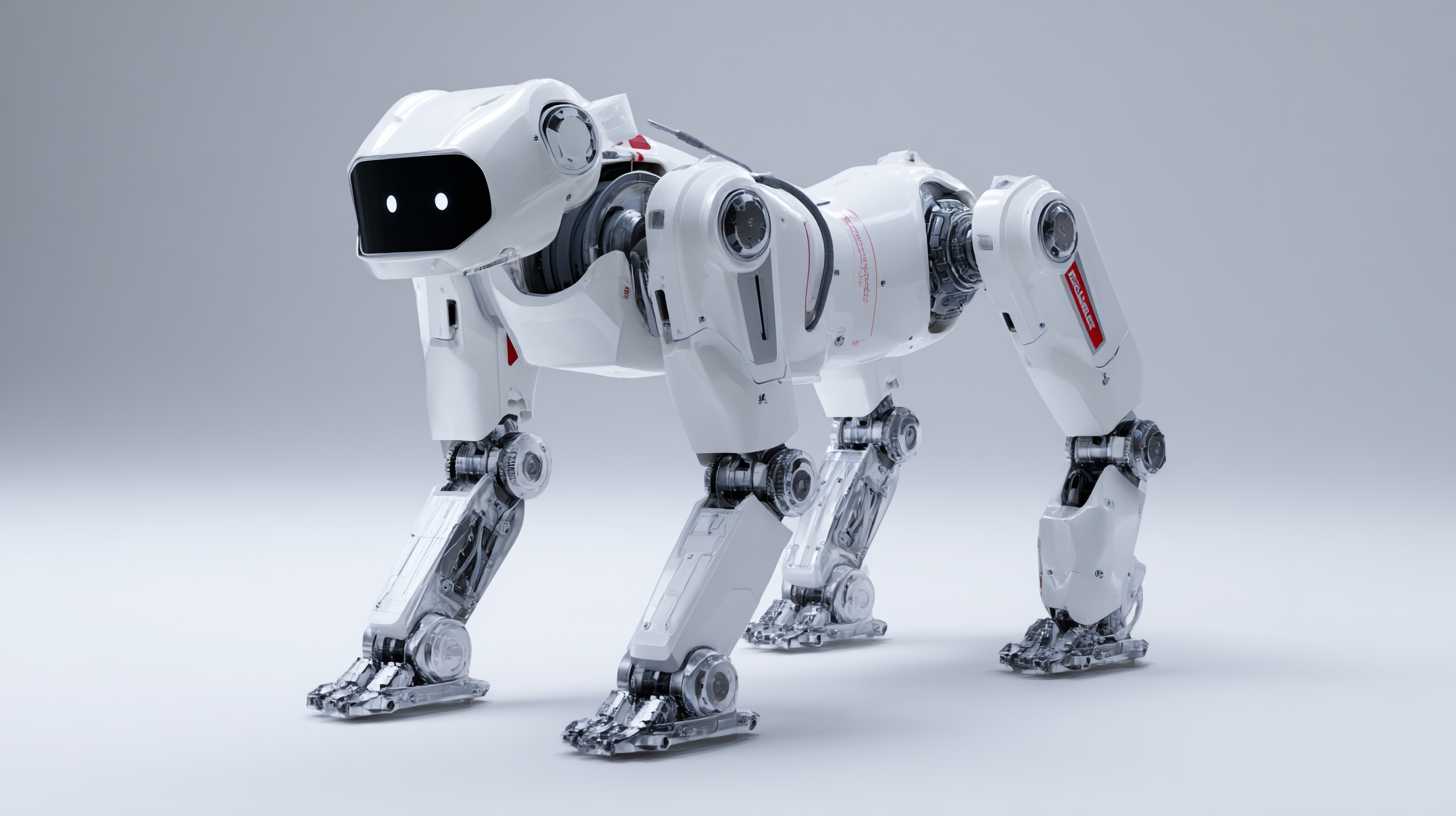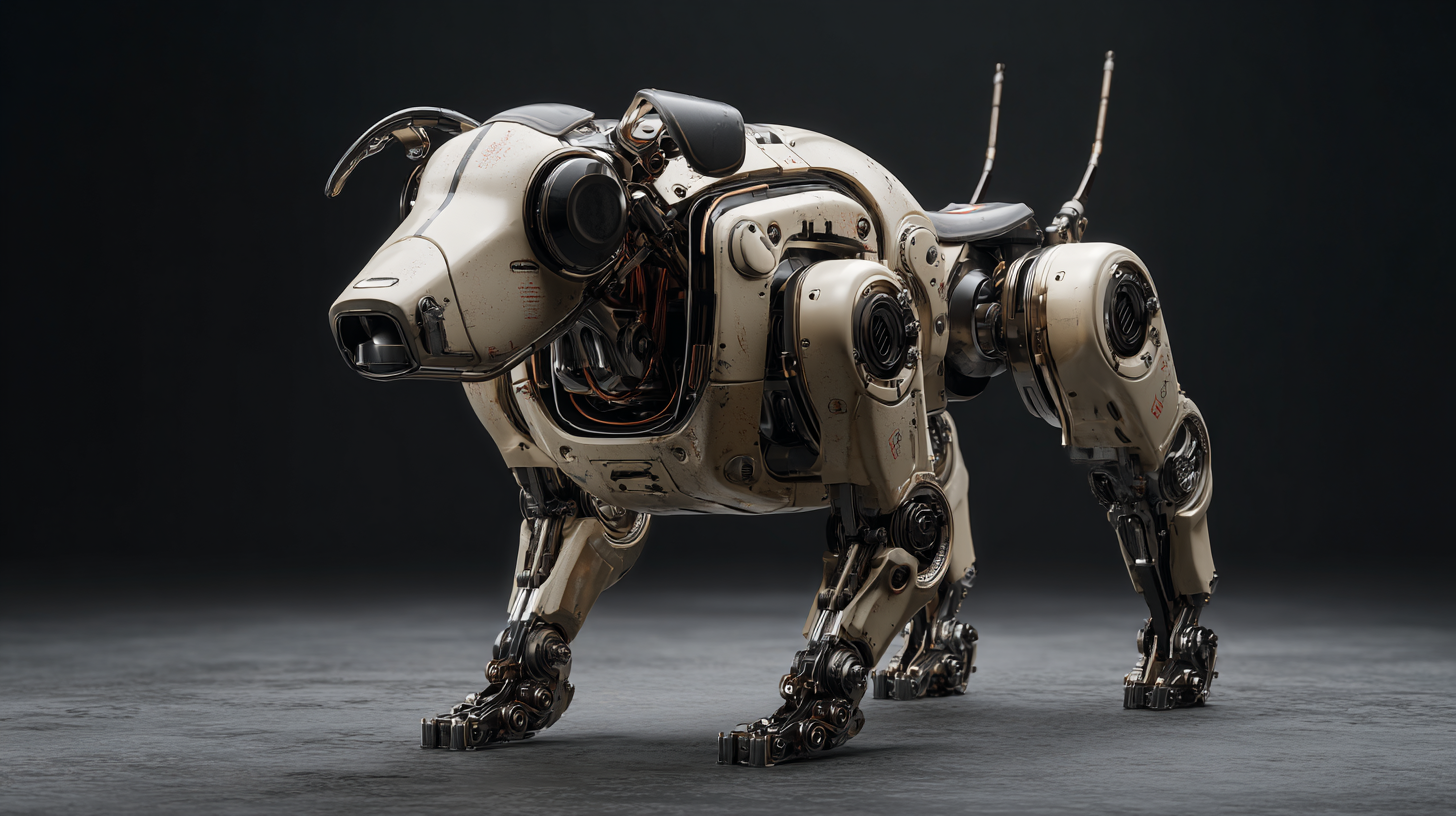As we step into a new era of robotics, the emergence of walking robot dogs is poised to redefine not just pet companionship but also various industries. Recent industry reports predict that the global robotic dog market will grow at a CAGR of 16% from 2022 to 2026, driven by advancements in AI and machine learning technologies. These robotic companions are designed not only for entertainment but also for applications in security, healthcare, and even search and rescue operations. By 2025, the role of walking robot dogs is expected to evolve significantly, influencing robotics trends and consumer expectations alike. As we explore how these innovative machines will shape the future, we can anticipate a world where walking robot dogs become integral in enhancing our daily lives and industries.

The evolution of robotic canines has accelerated at an astonishing pace, paving the way for a future where these mechanical companions will be an integral part of our daily lives by 2025. Advances in artificial intelligence, sensor technology, and materials science have allowed developers to create more sophisticated and lifelike robotic dogs, capable of interacting with humans and adapting to their environments. These advancements will not only redefine companionship but also open new avenues in education, therapy, and security.
Tip 1: When considering a robotic dog for your family, think about its features. Look for models that prioritize interactivity, as those that can learn and respond to commands provide a more engaging experience.

As we gaze toward 2025, the potential for robotic dogs to assist in various roles becomes increasingly apparent. From therapy assistants that provide emotional support to elderly individuals to versatile helpers in various industries, the possibilities are vast. The seamless integration of these machines into our everyday routines will revolutionize how we perceive and interact with robotics.
Tip 2: Stay informed about evolving technologies in robotic designs and functionalities. Keeping up with the latest innovations can help you choose a robotic dog that best suits your needs and lifestyle.
As we look ahead to 2025, the landscape of robotics is set to be dramatically shaped by the emergence of next-generation walking robot dogs. These innovative machines are not just designed for companionship; they are equipped with cutting-edge features that enhance their functionality and usability in various environments. Advanced navigation systems, utilizing real-time mapping and obstacle detection, will allow these robotic companions to traverse complex terrains with ease, making them invaluable aids in both urban and rural settings.
Moreover, artificial intelligence will play a pivotal role in personalizing interactions between humans and robot dogs. With machine learning capabilities, these robots will adapt to individual user preferences and behaviors, creating a more intuitive and engaging experience. Features such as voice recognition, emotional responsiveness, and social interaction programming will ensure that each robot dog develops a unique bond with its owner, bridging the gap between technology and companionship. As these innovations unfold, we can expect walking robot dogs to redefine our expectations of robotic assistance and elevate their role in our daily lives.
As we look towards 2025, the evolution of walking robot dogs is set to revolutionize the landscape of robotics, chiefly through the power of artificial intelligence. AI is playing a pivotal role in enhancing these robotic companions, enabling them to navigate complex environments with remarkable agility and autonomy. With advanced machine learning algorithms, these robots can learn from their surroundings, adjust their behaviors based on real-time feedback, and even recognize and respond to their human companions' emotions, making them more engaging and useful.
Moreover, the integration of AI allows for the development of sophisticated communication systems within robot dogs. They can interact seamlessly with users, providing companionship, assistance, and even security. Voice recognition and situational awareness are critical features that empower these robots to manage tasks like fetching items, monitoring homes, or simply offering comfort. As AI technology progresses, we can expect these walking robot dogs to become more than just mechanical pets; they will evolve into intelligent assistants that enhance our daily lives in innovative ways.
As we look forward to 2025, the potential applications of robot dogs in various industries continue to excite professionals and innovators alike. According to a report by McKinsey, the robotics market is expected to grow at a CAGR of 26% over the next few years, highlighting the increasing integration of autonomous robots in our daily lives. Robot dogs, leveraging advanced AI and mobility features, can significantly enhance operations in sectors such as security, healthcare, and logistics.

In the security field, robot dogs equipped with sensors and cameras can patrol facilities, providing real-time surveillance and reducing the need for human presence in potentially dangerous situations. A study from ABI Research indicates that the integration of robots in security services could save companies up to $2 billion annually by 2026. Moreover, in healthcare, robot dogs can aid in therapy sessions for patients with mobility challenges, helping navigate spaces and providing companionship, which is crucial for emotional well-being. As reported by the World Economic Forum, robotic solutions in healthcare are expected to create cost savings of approximately $220 billion by 2025, demonstrating the transformative role these innovations play across various sectors.
As we venture into the future of robotics, the emergence of robot companions, particularly walking robotic dogs, raises significant ethical considerations that cannot be overlooked. According to a report by the International Federation of Robotics, the market for personal and service robots is projected to exceed $23 billion by 2025. This rapid expansion necessitates a critical examination of the ethical implications of the technologies we are developing, especially those designed to interact closely with humans.
One major concern is the potential for emotional attachment that users may develop toward robotic pets. A 2022 study published in the Journal of Human-Robot Interaction indicated that 68% of participants reported feeling an emotional bond with their robotic companions. This attachment prompts ethical questions about autonomy, companionship, and the potential for neglect of real animals in favor of robotic alternatives. Moreover, designers must ensure that these robots prioritize user safety and well-being, adhering to established ethical guidelines that promote responsible innovation in robotics. As we look ahead to 2025, addressing these ethical considerations will be crucial in shaping the future landscape of robotics and the role that walking robot dogs will play in it.
| Feature | Description | Ethical Considerations | Expected Impact by 2025 |
|---|---|---|---|
| Autonomous Navigation | Ability to navigate various terrains and environments independently. | Ensuring safety in public spaces and preventing accidents. | Increased adoption in urban areas for companionship and security. |
| Emotional Interaction | Designed to respond to human emotions, providing companionship. | Balancing attachment and dependency on robotic companions. | Enhanced roles in therapy and social settings. |
| Health Monitoring | Integration of health sensors to monitor users' conditions. | Privacy concerns regarding health data collection. | Positive impact on elderly care and health management. |
| Sustainability | Energy-efficient designs and use of recyclable materials. | Long-term environmental impacts of robotics manufacturing. | Encouragement of sustainable practices in technology. |
| Customization | Ability to personalize robot behaviors and appearances. | Challenges in setting ethical boundaries for personalization. | Increased user satisfaction and market growth. |
